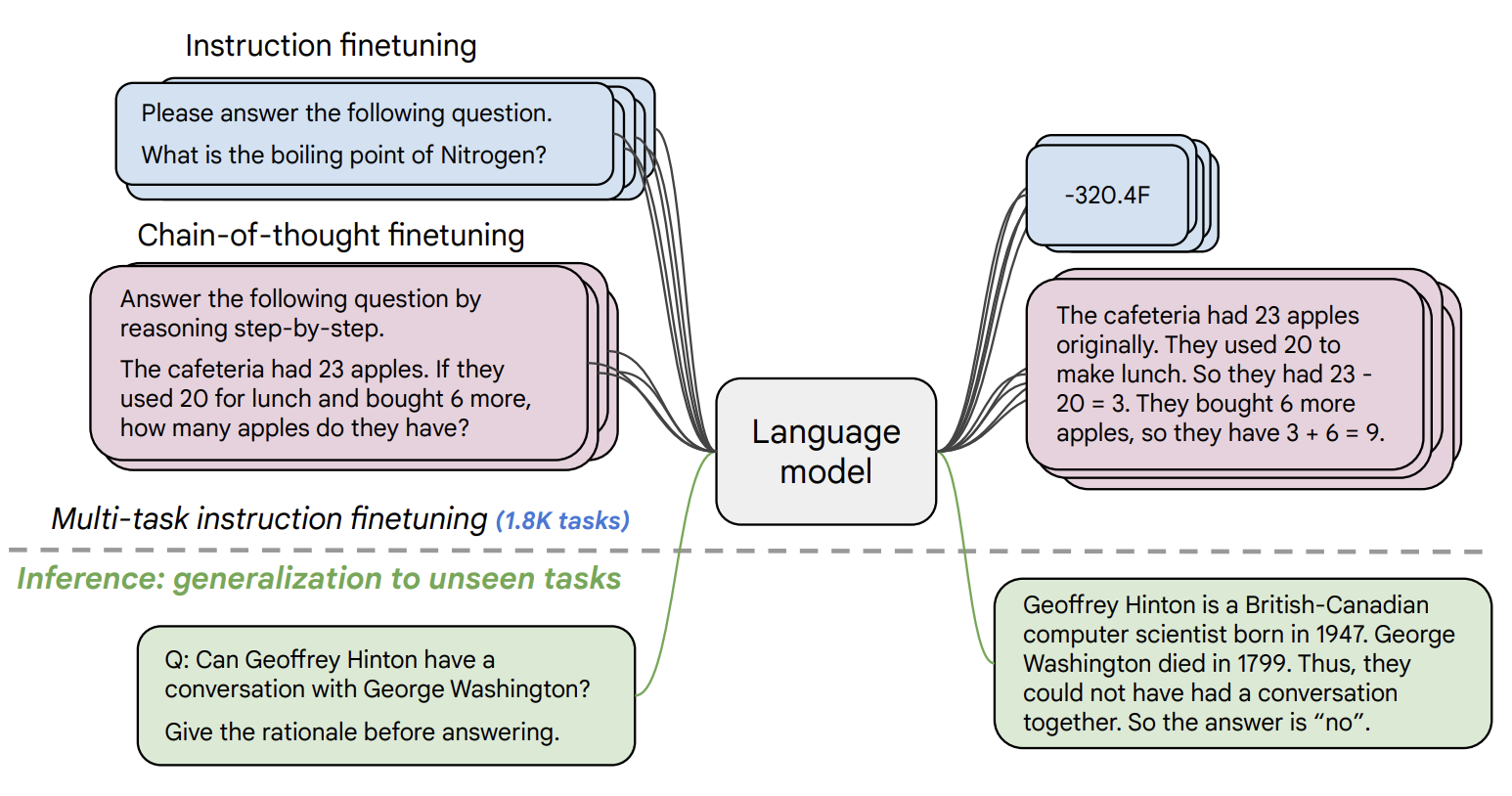all-mpnet-base-v2
Maintainer: replicate

1.1K

| Property | Value |
|---|---|
| Model Link | View on Replicate |
| API Spec | View on Replicate |
| Github Link | View on Github |
| Paper Link | View on Arxiv |
Get summaries of the top AI models delivered straight to your inbox:
Model overview
The all-mpnet-base-v2 is a language model developed by Replicate that can be used to obtain document embeddings for downstream tasks like semantic search and clustering. This model is based on the MPNet architecture and has been fine-tuned on 1 billion sentence pairs. Similar models include all-mpnet-base-v2 for sentence embedding, stable-diffusion for text-to-image generation, and multilingual-e5-large for multi-language text embeddings.
Model inputs and outputs
The all-mpnet-base-v2 model takes either a single string as input or a batch of strings, and outputs an array of embeddings. These embeddings can be used for various downstream tasks like semantic search, clustering, and classification.
Inputs
- text: A single string to encode
- text_batch: A JSON-formatted list of strings to encode
Outputs
- An array of embeddings, where each embedding corresponds to one of the input strings
Capabilities
The all-mpnet-base-v2 model can be used to generate semantic embeddings for text. These embeddings capture the meaning and context of the input text, allowing for tasks like semantic search, text similarity, and clustering. The model has been fine-tuned on a large corpus of text, giving it the ability to understand a wide range of language and topics.
What can I use it for?
The all-mpnet-base-v2 model can be used for a variety of natural language processing tasks, such as:
- Semantic search: Use the embeddings to find similar documents or passages based on their semantic content, rather than just keywords.
- Text clustering: Group related documents or passages based on the similarity of their embeddings.
- Recommendation systems: Recommend relevant content to users based on the similarity of the embeddings to their interests or previous interactions.
Things to try
One interesting thing to try with the all-mpnet-base-v2 model is to compare the embeddings of different texts and see how they relate to each other semantically. You could, for example, encode a set of news articles or research papers and then visualize the relationships between them using techniques like t-SNE or UMAP. This could help you gain insights into the underlying themes and connections within your data.
This summary was produced with help from an AI and may contain inaccuracies - check out the links to read the original source documents!
Related Models
🤷
all-mpnet-base-v2

45
The all-mpnet-base-v2 is a sentence-transformers model that maps sentences and paragraphs to a 768 dimensional dense vector space, enabling tasks like clustering or semantic search. It is based on the MPNet model and was fine-tuned on over 1 billion sentence pairs from various datasets. The model achieves state-of-the-art performance on a range of sentence embedding benchmarks. Model inputs and outputs The all-mpnet-base-v2 model takes one or more text inputs and outputs corresponding sentence embeddings. These embeddings can then be used for downstream tasks like semantic search, clustering, or paraphrase mining. Inputs input**: Text input, a sentence or short paragraph input2**: Additional text input input3**: Additional text input input4**: Additional text input input5**: Additional text input Outputs The model outputs a list of sentence embeddings, where each embedding is a 768-dimensional vector representing the semantic content of the input text. Capabilities The all-mpnet-base-v2 model is capable of generating high-quality sentence embeddings that capture the semantic meaning of the input text. These embeddings can be effectively used for a variety of NLP tasks, such as semantic search, text clustering, and paraphrase detection. The model's performance has been extensively evaluated on a wide range of benchmarks, demonstrating state-of-the-art results. What can I use it for? The all-mpnet-base-v2 model can be used for a variety of natural language processing applications that require semantic understanding of text. Some potential use cases include: Semantic search**: The model can be used to encode text queries and documents, allowing for efficient retrieval of relevant information based on semantic similarity. Text clustering**: By clustering the sentence embeddings generated by the model, you can group similar text together, enabling applications like topic modeling or document organization. Paraphrase detection**: The model can identify semantically similar sentences, which can be useful for detecting paraphrases, identifying duplicate content, or finding related information. Things to try One interesting thing to try with the all-mpnet-base-v2 model is to use it for cross-lingual tasks, such as finding translations or parallel sentences across languages. Since the model was trained on a diverse corpus of multilingual data, it should be able to produce high-quality embeddings for text in many languages, allowing you to perform tasks like multilingual semantic search or translated sentence mining. Another area to explore is fine-tuning the model on domain-specific data to optimize its performance for your particular use case. The sentence-transformers framework provides guidance and examples on how to fine-tune these models for custom applications.
Updated Invalid Date

stable-diffusion

107.9K
Stable Diffusion is a latent text-to-image diffusion model capable of generating photo-realistic images given any text input. Developed by Stability AI, it is an impressive AI model that can create stunning visuals from simple text prompts. The model has several versions, with each newer version being trained for longer and producing higher-quality images than the previous ones. The main advantage of Stable Diffusion is its ability to generate highly detailed and realistic images from a wide range of textual descriptions. This makes it a powerful tool for creative applications, allowing users to visualize their ideas and concepts in a photorealistic way. The model has been trained on a large and diverse dataset, enabling it to handle a broad spectrum of subjects and styles. Model inputs and outputs Inputs Prompt**: The text prompt that describes the desired image. This can be a simple description or a more detailed, creative prompt. Seed**: An optional random seed value to control the randomness of the image generation process. Width and Height**: The desired dimensions of the generated image, which must be multiples of 64. Scheduler**: The algorithm used to generate the image, with options like DPMSolverMultistep. Num Outputs**: The number of images to generate (up to 4). Guidance Scale**: The scale for classifier-free guidance, which controls the trade-off between image quality and faithfulness to the input prompt. Negative Prompt**: Text that specifies things the model should avoid including in the generated image. Num Inference Steps**: The number of denoising steps to perform during the image generation process. Outputs Array of image URLs**: The generated images are returned as an array of URLs pointing to the created images. Capabilities Stable Diffusion is capable of generating a wide variety of photorealistic images from text prompts. It can create images of people, animals, landscapes, architecture, and more, with a high level of detail and accuracy. The model is particularly skilled at rendering complex scenes and capturing the essence of the input prompt. One of the key strengths of Stable Diffusion is its ability to handle diverse prompts, from simple descriptions to more creative and imaginative ideas. The model can generate images of fantastical creatures, surreal landscapes, and even abstract concepts with impressive results. What can I use it for? Stable Diffusion can be used for a variety of creative applications, such as: Visualizing ideas and concepts for art, design, or storytelling Generating images for use in marketing, advertising, or social media Aiding in the development of games, movies, or other visual media Exploring and experimenting with new ideas and artistic styles The model's versatility and high-quality output make it a valuable tool for anyone looking to bring their ideas to life through visual art. By combining the power of AI with human creativity, Stable Diffusion opens up new possibilities for visual expression and innovation. Things to try One interesting aspect of Stable Diffusion is its ability to generate images with a high level of detail and realism. Users can experiment with prompts that combine specific elements, such as "a steam-powered robot exploring a lush, alien jungle," to see how the model handles complex and imaginative scenes. Additionally, the model's support for different image sizes and resolutions allows users to explore the limits of its capabilities. By generating images at various scales, users can see how the model handles the level of detail and complexity required for different use cases, such as high-resolution artwork or smaller social media graphics. Overall, Stable Diffusion is a powerful and versatile AI model that offers endless possibilities for creative expression and exploration. By experimenting with different prompts, settings, and output formats, users can unlock the full potential of this cutting-edge text-to-image technology.
Updated Invalid Date

gpt-j-6b

8
gpt-j-6b is a large language model developed by EleutherAI, a non-profit AI research group. It is a fine-tunable model that can be adapted for a variety of natural language processing tasks. Compared to similar models like stable-diffusion, flan-t5-xl, and llava-13b, gpt-j-6b is specifically designed for text generation and language understanding. Model inputs and outputs The gpt-j-6b model takes a text prompt as input and generates a completion in the form of more text. The model can be fine-tuned on a specific dataset, allowing it to adapt to various tasks like question answering, summarization, and creative writing. Inputs Prompt**: The initial text that the model will use to generate a completion. Outputs Completion**: The text generated by the model based on the input prompt. Capabilities gpt-j-6b is capable of generating human-like text across a wide range of domains, from creative writing to task-oriented dialog. It can be used for tasks like summarization, translation, and open-ended question answering. The model's performance can be further improved through fine-tuning on specific datasets. What can I use it for? The gpt-j-6b model can be used for a variety of applications, such as: Content Generation**: Generating high-quality text for articles, stories, scripts, and more. Chatbots and Virtual Assistants**: Building conversational AI systems that can engage in natural dialogue. Question Answering**: Answering open-ended questions by retrieving and synthesizing relevant information. Summarization**: Condensing long-form text into concise summaries. These capabilities make gpt-j-6b a versatile tool for businesses, researchers, and developers looking to leverage advanced natural language processing in their projects. Things to try One interesting aspect of gpt-j-6b is its ability to perform few-shot learning, where the model can quickly adapt to a new task or domain with only a small amount of fine-tuning data. This makes it a powerful tool for rapid prototyping and experimentation. You could try fine-tuning the model on your own dataset to see how it performs on a specific task or application.
Updated Invalid Date

flan-t5-xl

134
flan-t5-xl is a large language model developed by Google that is based on the T5 model architecture. It is a "FLAN" (Finetuned Language Model) model, meaning it has been fine-tuned on a diverse set of over 1,000 tasks and datasets to improve its performance on a wide range of language understanding and generation tasks. The flan-t5-xl model is the extra-large variant, with more parameters than the standard T5 model. Similar models include the smaller flan-t5-large model and the even larger FLAN-T5-XXL model. There is also the multilingual multilingual-e5-large model which is designed for multi-language tasks. Model inputs and outputs The flan-t5-xl model takes in text prompts as input and generates text outputs. The model can be used for a variety of natural language processing tasks such as classification, summarization, translation, and more. Inputs prompt**: The text prompt to send to the FLAN-T5 model Outputs generated text**: The text generated by the model in response to the input prompt Capabilities flan-t5-xl is a highly capable language model that can perform a wide range of NLP tasks. It has been fine-tuned on over 1,000 different tasks and datasets, giving it broad competence. The model can excel at tasks like summarization, translation, question answering, and open-ended text generation. What can I use it for? The flan-t5-xl model could be used for a variety of applications that require natural language processing, such as: Content generation**: Use the model to generate human-like text for things like product descriptions, marketing copy, or creative writing. Summarization**: Leverage the model's summarization capabilities to automatically generate concise summaries of long documents or articles. Translation**: Fine-tune the model on translation data to create a multilingual language model that can translate between various languages. Question answering**: Use the model to build chatbots or virtual assistants that can understand and respond to user questions. Things to try One interesting aspect of the flan-t5-xl model is its strong few-shot learning performance. This means that it can often achieve good results on new tasks with just a handful of training examples, without requiring extensive fine-tuning. Experimenting with different prompting techniques and few-shot learning setups could yield some surprising and novel applications for the model. Another intriguing area to explore would be using the flan-t5-xl model in a multi-modal setting, combining its language understanding capabilities with visual or other modalities. This could unlock new ways of interacting with and reasoning about the world.
Updated Invalid Date